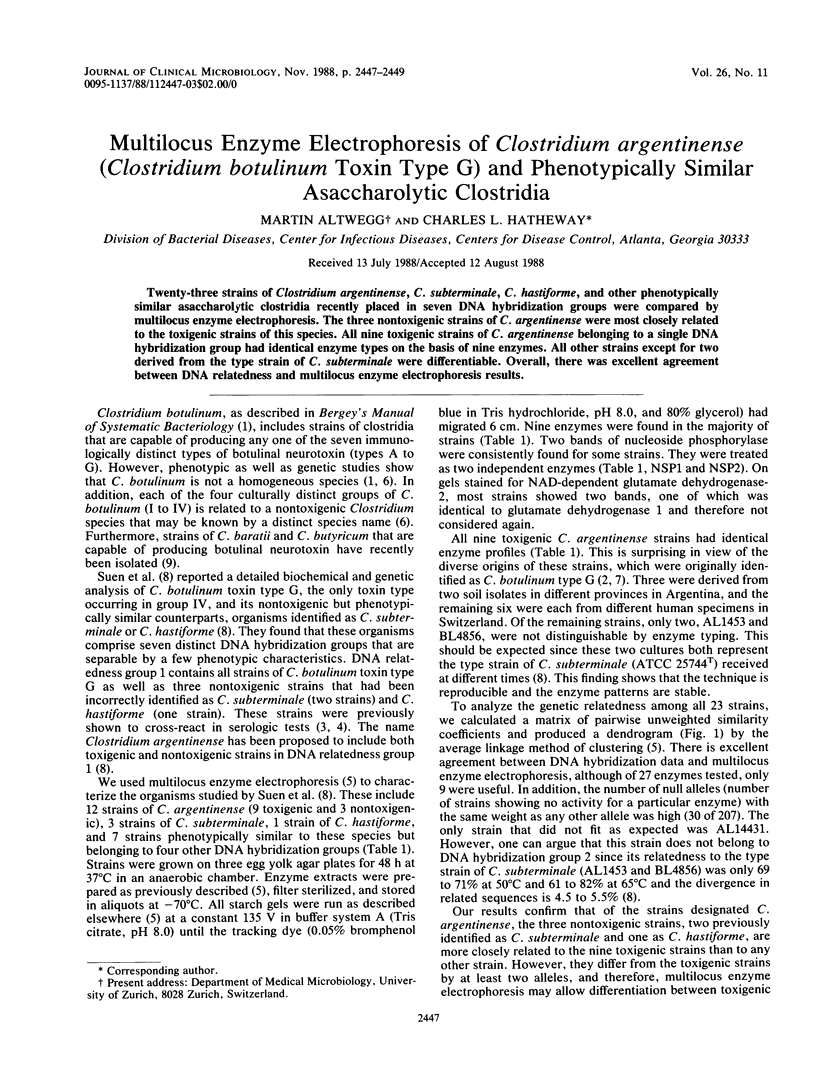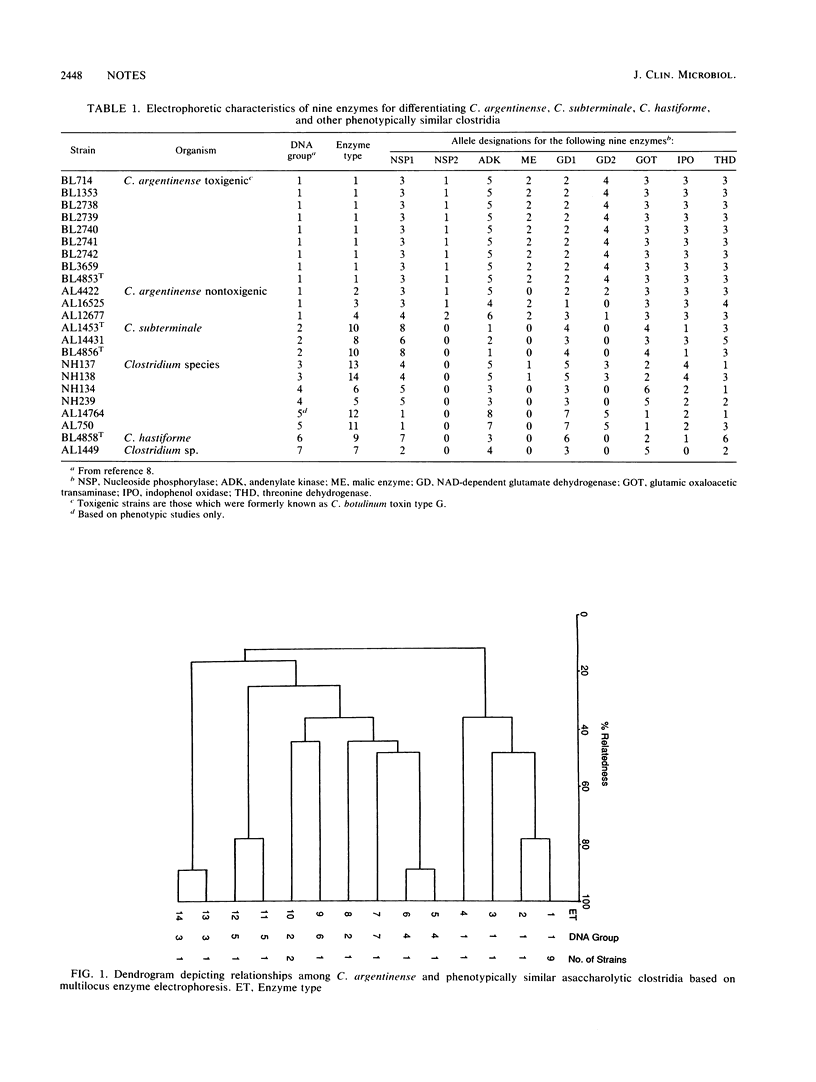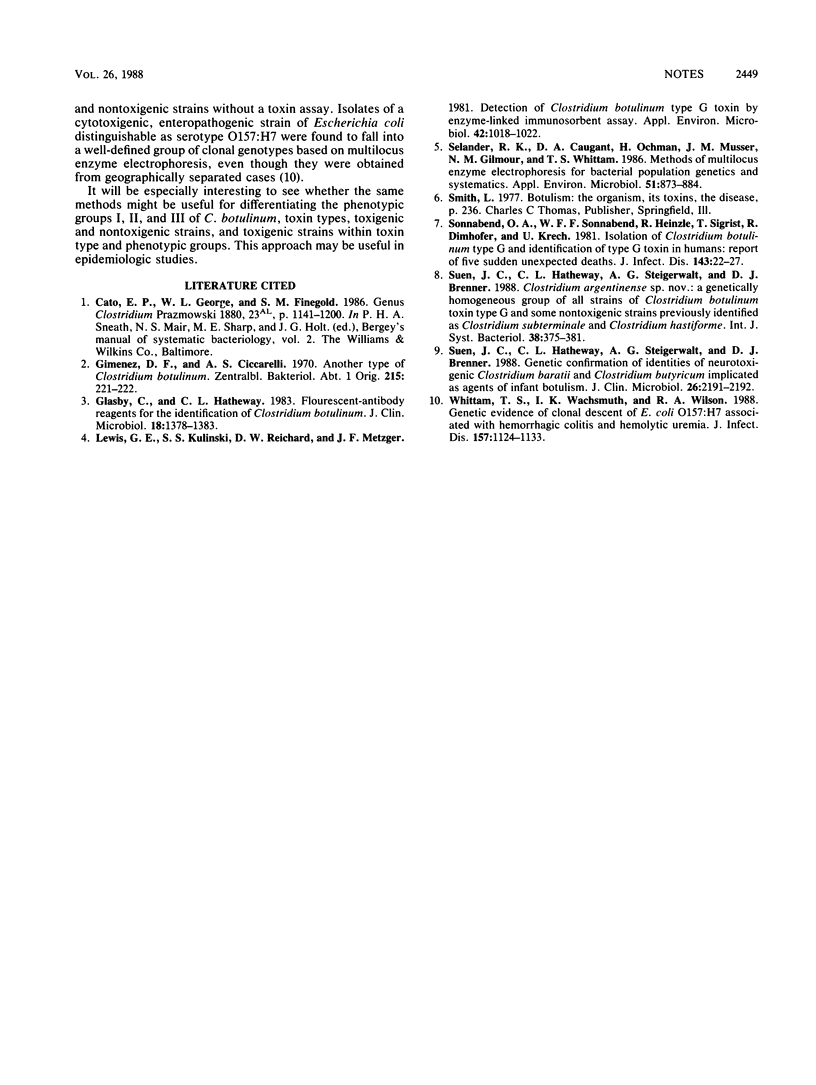Abstract
Twenty-three strains of Clostridium argentinense, C. subterminale, C. hastiforme, and other phenotypically similar asaccharolytic clostridia recently placed in seven DNA hybridization groups were compared by multilocus enzyme electrophoresis. The three nontoxigenic strains of C. argentinense were most closely related to the toxigenic strains of this species. All nine toxigenic strains of C. argentinense belonging to a single DNA hybridization group had identical enzyme types on the basis of nine enzymes. All other strains except for two derived from the type strain of C. subterminale were differentiable. Overall, there was excellent agreement between DNA relatedness and multilocus enzyme electrophoresis results.
Full text
PDF


Selected References
These references are in PubMed. This may not be the complete list of references from this article.
- Giménez D. F., Ciccarelli A. S. Another type of Clostridium botulinum. Zentralbl Bakteriol Orig. 1970;215(2):221–224. [PubMed] [Google Scholar]
- Glasby C., Hatheway C. L. Fluorescent-antibody reagents for the identification of Clostridium botulinum. J Clin Microbiol. 1983 Dec;18(6):1378–1383. doi: 10.1128/jcm.18.6.1378-1383.1983. [DOI] [PMC free article] [PubMed] [Google Scholar]
- Lewis G. E., Jr, Kulinski S. S., Reichard D. W., Metzger J. F. Detection of Clostridium botulinum type G toxin by enzyme-linked immunosorbent assay. Appl Environ Microbiol. 1981 Dec;42(6):1018–1022. doi: 10.1128/aem.42.6.1018-1022.1981. [DOI] [PMC free article] [PubMed] [Google Scholar]
- Selander R. K., Caugant D. A., Ochman H., Musser J. M., Gilmour M. N., Whittam T. S. Methods of multilocus enzyme electrophoresis for bacterial population genetics and systematics. Appl Environ Microbiol. 1986 May;51(5):873–884. doi: 10.1128/aem.51.5.873-884.1986. [DOI] [PMC free article] [PubMed] [Google Scholar]
- Sonnabend O., Sonnabend W., Heinzle R., Sigrist T., Dirnhofer R., Krech U. Isolation of Clostridium botulinum type G and identification of type G botulinal toxin in humans: report of five sudden unexpected deaths. J Infect Dis. 1981 Jan;143(1):22–27. doi: 10.1093/infdis/143.1.22. [DOI] [PubMed] [Google Scholar]
- Suen J. C., Hatheway C. L., Steigerwalt A. G., Brenner D. J. Genetic confirmation of identities of neurotoxigenic Clostridium baratii and Clostridium butyricum implicated as agents of infant botulism. J Clin Microbiol. 1988 Oct;26(10):2191–2192. doi: 10.1128/jcm.26.10.2191-2192.1988. [DOI] [PMC free article] [PubMed] [Google Scholar]
- Whittam T. S., Wachsmuth I. K., Wilson R. A. Genetic evidence of clonal descent of Escherichia coli O157:H7 associated with hemorrhagic colitis and hemolytic uremic syndrome. J Infect Dis. 1988 Jun;157(6):1124–1133. doi: 10.1093/infdis/157.6.1124. [DOI] [PubMed] [Google Scholar]


